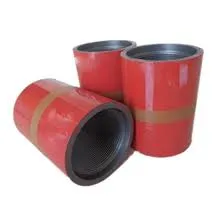- Afrikaans
- Albanian
- Amharic
- Arabic
- Armenian
- Azerbaijani
- Basque
- Belarusian
- Bengali
- Bosnian
- Bulgarian
- Catalan
- Cebuano
- Corsican
- Croatian
- Czech
- Danish
- Dutch
- English
- Esperanto
- Estonian
- Finnish
- French
- Frisian
- Galician
- Georgian
- German
- Greek
- Gujarati
- Haitian Creole
- hausa
- hawaiian
- Hebrew
- Hindi
- Miao
- Hungarian
- Icelandic
- igbo
- Indonesian
- irish
- Italian
- Japanese
- Javanese
- Kannada
- kazakh
- Khmer
- Rwandese
- Korean
- Kurdish
- Kyrgyz
- Lao
- Latin
- Latvian
- Lithuanian
- Luxembourgish
- Macedonian
- Malgashi
- Malay
- Malayalam
- Maltese
- Maori
- Marathi
- Mongolian
- Myanmar
- Nepali
- Norwegian
- Norwegian
- Occitan
- Pashto
- Persian
- Polish
- Portuguese
- Punjabi
- Romanian
- Russian
- Samoan
- Scottish Gaelic
- Serbian
- Sesotho
- Shona
- Sindhi
- Sinhala
- Slovak
- Slovenian
- Somali
- Spanish
- Sundanese
- Swahili
- Swedish
- Tagalog
- Tajik
- Tamil
- Tatar
- Telugu
- Thai
- Turkish
- Turkmen
- Ukrainian
- Urdu
- Uighur
- Uzbek
- Vietnamese
- Welsh
- Bantu
- Yiddish
- Yoruba
- Zulu
Exploring the Features and Benefits of J55 Coupling in Oil and Gas Applications
Understanding J55 Couplings Applications and Benefits
In the world of piping and drilling, the J55 coupling stands as a significant component known for its strength and reliability. It plays a crucial role in the oil and gas industry, particularly in the context of drilling and production operations. Understanding what J55 couplings are, their specifications, and their applications can provide insights into their importance in various industrial settings.
What is J55 Coupling?
J55 refers to a specific grade of steel that is commonly used in the manufacture of oil country tubular goods (OCTG), including pipes and couplings. The designation 'J' stands for Joint, while '55' represents the minimum yield strength, measured in kilopounds per square inch (ksi), equating to approximately 55 ksi. J55 is categorized as a medium-strength steel grade that offers excellent performance in drilling operations and can withstand high pressure and harsh environments.
A coupling is a mechanical device used to connect two segments of pipe, allowing for the transfer of fluids or gases while maintaining structural integrity. J55 couplings are specifically designed to work with J55 pipes, ensuring compatibility and strength across connections in drilling assemblies.
Key Specifications
J55 couplings adhere to various industry standards, ensuring their quality and reliability. These specifications often include
1. Yield Strength As mentioned, J55 has a minimum yield strength of about 55 ksi, making it suitable for various applications in medium to high-pressure environments. 2. Material Composition J55 steel typically includes elements such as carbon, manganese, and other alloying agents that enhance its toughness and corrosion resistance. 3. Dimensions Standard dimensions for J55 couplings are established to fit seamlessly with J55 pipes, maintaining cohesion in drilling operations. 4. Coatings Many J55 couplings are coated to resist corrosion, which enhances their lifespan, especially in reactive environments such as saltwater or acidic conditions.
Applications of J55 Couplings
j55 coupling

J55 couplings find extensive use in various sectors, primarily in the oil and gas industry, where their robust design helps ensure safe and efficient operations. Some of their primary applications include
1. Oil Drilling J55 couplings are essential components in drilling assemblies. They connect sections of drill pipe, allowing for the continuous advancement of the drilling process while withstanding substantial stresses. 2. Natural Gas Transmission The ability to handle high pressure makes J55 couplings ideal for natural gas transportation. Their durability helps maintain the integrity of pipelines that transport gas from extraction sites to processing facilities. 3. Water Injection Projects In enhanced oil recovery (EOR) techniques, water is often injected into wells to increase pressure. J55 couplings ensure that the piping systems used in these operations are secure and leak-free. 4. Offshore Platforms The harsh marine environment places significant demands on materials used in offshore drilling. J55 couplings, with adequate coatings and corrosion resistance, are ideal for use in such applications.
Advantages of Using J55 Couplings
1. High Strength and Durability The steel's mechanical properties make J55 couplings an excellent choice for demanding applications. They are designed to handle both tensile and compressive forces that occur during drilling and operations.
2. Cost-Effectiveness While there are stronger grades available, J55 couplings offer a balance between strength and cost, making them a practical choice for many applications.
3. Versatile Use The J55 grade can be employed across various industries beyond oil and gas, including construction and water management, showcasing its versatility.
4. Safety Compliance J55 couplings comply with established industry standards, ensuring safety and reliability in their performance, which is paramount in hazardous environments.
Conclusion
In summary, J55 couplings represent a crucial component in drilling and pipeline operations, primarily within the oil and gas sector. With their proven strength, durability, and versatility, they are an ideal choice for various applications, from oil drilling to natural gas transmission. As technology evolves and the demand for efficient energy solutions grows, the importance of reliable components like J55 couplings will undoubtedly remain integral to the industry's success. Understanding these couplings' specifications and applications provides a deeper appreciation for the engineering that underpins effective resource extraction and management.
-
Tubing Pup Joints: Essential Components for Oil and Gas OperationsNewsJul.10,2025
-
Pup Joints: Essential Components for Reliable Drilling OperationsNewsJul.10,2025
-
Pipe Couplings: Connecting Your World EfficientlyNewsJul.10,2025
-
Mastering Oilfield Operations with Quality Tubing and CasingNewsJul.10,2025
-
High-Quality Casing Couplings for Every NeedNewsJul.10,2025
-
Boost Your Drilling Efficiency with Premium Crossover Tools & Seating NipplesNewsJul.10,2025







